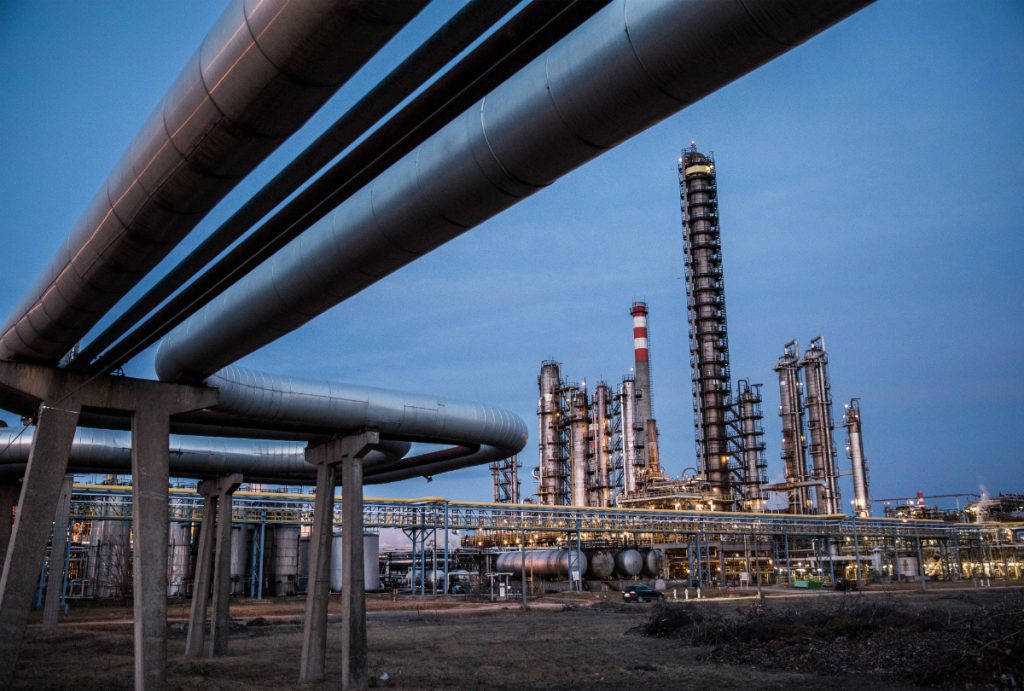
(Reuters) – China is building oil reserve sites at a rapid clip as part of a campaign to boost crude stockpiles that increased in urgency after Russia’s Ukraine invasion upended global energy flows and has accelerated this year, according to public data, traders and industry experts.
State oil companies including Sinopec and CNOOC will add at least 169 million barrels of storage across 11 sites during 2025 and 2026, according to public sources including domestic news reports, government reports and company websites.
Of that, 37 million barrels of capacity has been built, the sources show. Once completed, the new sites will be able to store two weeks of China’s net crude imports, according to Reuters calculations based on Chinese trade data, a significant volume as China is by far the world’s biggest oil importer.
Beijing’s reserve-building – S&P Global Commodity Insight last month estimated China had stockpiled an average of 530,000 barrels per day thus far in 2025 – is soaking up surplus global supply and supporting prices under pressure as the OPEC+ producers group winds down production cuts. Traders and consultancies say they expect the stockpiling, fuelled by prices recently below $70 per barrel, to continue at least through the first quarter of 2026.
China’s heavy dependence on foreign oil, carried mainly by tankers, is a strategic vulnerability that Beijing is seeking to mitigate through storage, diversification of import sources and maintaining domestic production. China is also rapidly developing renewable energy and electrifying its vehicle fleet, with both gasoline and diesel demand declining and overall oil consumption likely to peak in 2027.
Its reserve site construction is accelerating. The new additions planned for this year and next, based on Reuters research, nearly match the 180-190 million barrels of capacity that analytics firms Vortexa and Kpler, respectively, estimate were added in the previous five years.
China’s secrecy about its reserves means the list may not be comprehensive and the status of projects could change.
Beijing built its first strategic reserve site in 2006, but its recent push stems from the aftermath of Russia’s 2022 invasion of Ukraine, which triggered a wave of disruptive sanctions on Moscow and highlighted the vulnerability of Beijing’s oil imports, traders and analysts said.
Since late 2023, Beijing has quietly issued mandates to state-owned companies to stockpile oil, traders and analysts say. London-based Energy Aspects in July cited a mandate calling for 140 million barrels to be purchased for strategic reserves, with deliveries through March 2026.
“China’s stockbuilding strategy has always been to have sufficient energy security for the nation that is highly dependent on crude imports,” said June Goh, Singapore-based analyst at Sparta Commodities.
“The agenda has become more urgent this year with heightened geopolitical risks surrounding Russia and Iran,” she said, citing potential conflict-related disruptions.
China is the top crude customer for both countries.
BLURRED LINES
China’s government stockpiles comprise dedicated Strategic Petroleum Reserve (SPR) sites built before 2019 and more recent storage known as “commercial reserves”.
Both serve as emergency reserves, experts say, with the latter operated with more flexibility under the oversight of the national reserve bureau, which allows state refiners to rotate stockpiles to meet commercial needs.
A law passed in January codified the integration by including both government and commercial stocks in a single definition of national reserves, saying companies should maintain government-supervised “social responsibility” reserves.
All the reserves are managed by dedicated divisions under state oil firms that are supervised by the National Food and Strategic Reserves Administration, which holds title to the stockpiles, according to two industry sources who declined to be named given the sensitivity of the matter.
In inland Shaanxi province, two sites under construction with combined capacity of 11 million barrels were described online by the provincial government as part of state reserves, according to local state media reports.
Another site, a 20-million-barrel Sinopec facility under construction on Hainan island, was described in February by a local state media outlet both as commercial storage and a contribution to national reserve capacity.
The National Food and Strategic Reserves Administration, Sinopec and CNOOC did not immediately reply to requests for comment.
MORE TO COME
Beijing’s last public update on its stockpiling capacity dates to 2017, when the National Bureau of Statistics said China had built nine storage bases with capacity totalling 238 million barrels.
In August, the semi-official China Petroleum and Petrochemical Industry Federation was cited in state media as saying state reserve storage capacity should grow to more than 1 billion barrels, equivalent to three months of net imports, without giving a timeline.
That would be in line with the International Energy Agency’s requirement that members hold stocks of at least 90 days of net imports, although China is not a member.
Two trade sources said Beijing aims to grow its stockpile to cover six months of imports, or roughly 2 billion barrels.
By comparison, the U.S. held 404 million barrels of crude in its strategic petroleum reserve at the end of August, although the country is the world’s biggest oil producer and since 2019 has been a net exporter.
Consultancy Kpler pegged China’s total onshore national reserves and commercial stocks, including holdings by state and private firms, at 799 million barrels by early September, 109 million barrels above levels at the start of 2023.
Vortexa estimated state-company controlled stockpiles, including refinery stocks, at 735 million barrels – a 73-million barrel-build over the same period.
Not included in those private estimates is oil stored at four underground SPR sites that Reuters reported in 2021 have capacity to hold 110 million barrels.
Reporting by Reuters staff Editing by Shri Navaratnam
Share This:




 CDN NEWS |
CDN NEWS |  US NEWS
US NEWS 






























